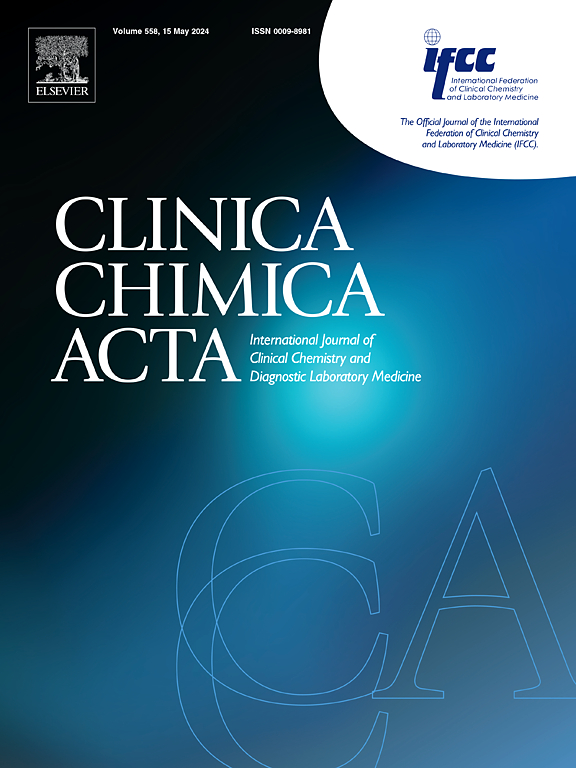Nanomaterial sensors for enhanced detection of serotonin
IF 3.2
3区 医学
Q2 MEDICAL LABORATORY TECHNOLOGY
引用次数: 0
Abstract
The detection of serotonin (5-HT), a critical neurotransmitter, has garnered significant attention in biosensor research because of its pivotal role in neurological and physiological processes. This narrative review highlights advancements in nanomaterial-based sensors designed to increase the sensitivity, specificity, and functionality of serotonin detection. Carbon-based nanomaterials, including carbon nanotubes (CNTs), graphene derivatives, and carbon nanofibers (CNFs), have demonstrated remarkable potential owing to their large surface area, superior electrical conductivity, and biocompatibility. These materials enable rapid electron transfer and selective serotonin adsorption, making them integral to electrochemical and wearable sensor technologies. Emerging technologies, including field-effect transistors (FETs), magnetoelastic biosensors, and molecularly imprinted polymers (MIPs), have demonstrated ultralow detection limits and real-time monitoring capabilities, suggesting promising applications for clinical diagnostics and personalized healthcare. Metal-based sensors, which utilize nanoparticles of gold, silver, and other metals, have also shown exceptional performance in serotonin detection through enhanced electrocatalysis and optical properties. This review underscores the transformative potential of nanomaterial-based sensors in serotonin detection, emphasizing their role in advancing neuroscience research, disease diagnostics, and therapeutic monitoring.
求助全文
约1分钟内获得全文
求助全文
来源期刊

Clinica Chimica Acta
医学-医学实验技术
CiteScore
10.10
自引率
2.00%
发文量
1268
审稿时长
23 days
期刊介绍:
The Official Journal of the International Federation of Clinical Chemistry and Laboratory Medicine (IFCC)
Clinica Chimica Acta is a high-quality journal which publishes original Research Communications in the field of clinical chemistry and laboratory medicine, defined as the diagnostic application of chemistry, biochemistry, immunochemistry, biochemical aspects of hematology, toxicology, and molecular biology to the study of human disease in body fluids and cells.
The objective of the journal is to publish novel information leading to a better understanding of biological mechanisms of human diseases, their prevention, diagnosis, and patient management. Reports of an applied clinical character are also welcome. Papers concerned with normal metabolic processes or with constituents of normal cells or body fluids, such as reports of experimental or clinical studies in animals, are only considered when they are clearly and directly relevant to human disease. Evaluation of commercial products have a low priority for publication, unless they are novel or represent a technological breakthrough. Studies dealing with effects of drugs and natural products and studies dealing with the redox status in various diseases are not within the journal''s scope. Development and evaluation of novel analytical methodologies where applicable to diagnostic clinical chemistry and laboratory medicine, including point-of-care testing, and topics on laboratory management and informatics will also be considered. Studies focused on emerging diagnostic technologies and (big) data analysis procedures including digitalization, mobile Health, and artificial Intelligence applied to Laboratory Medicine are also of interest.
 求助内容:
求助内容: 应助结果提醒方式:
应助结果提醒方式:


